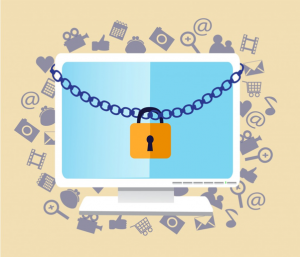By: Mariah Bayless-Davis

In 2015, O’Bannon v. NCAA challenged whether or not NCAA’s rule that prohibits student-athletes from being compensated for the use of their names, images, and likenesses was an unlawful restraint of trade.[1] The idea of paying student-athletes has always been entertained, that is until O’Bannon became a landmark case and set the precedent in the fight to pay student-athletes. After seeing his likeness being used without consent in a popular college basketball game, Ed O’Bannon sued NCAA and the Collegiate Licensing Company, which is the company that licenses the trademarks owned by NCAA.[2] He was joined by other college athletes in his argument that upon graduation, a former student athlete should come entitled to financial compensation for future commercial use of his/her image by the NCAA.[3] This would directly affect both O’Bannon and his co-plaintiff, Sam Keller, as their likenesses were used by Electronic Arts (EA) in popular video games.[4] The Circuit Court did rule that NCAA regulations were an unlawful restraint of trade as they prohibited “every contract, combination…or conspiracy, in restraint of trade of commerce.”[5] However, the only alternative the court recommended for this unlawful restraint of trade was to allow NCAA members to give scholarships up to the full cost of attendance.[6] Although talks of paying student athletes were going on well before O’Bannon and have continued after, March Madness and events surrounding the tournament have magnified the issue.
For the first year in tournament history, Turner Sports and CBS have partnered to produce and broadcast all of the March Madness basketball games.[7] In past years, the tournament only partnered with Turner Sports for broadcasting rights, which brought in upwards of $817 million in 2017 alone.[8] Sadly, but unexpected, the college athletes playing in those games saw none of that money. The conversation concerning O’Bannon and college athletes getting paid for their likeness came up again when CBS unveiled the “Zion Cam.”[9] The camera is exactly what it sounds like: a camera dedicated exclusively to the face of college basketball, Zion Williamson. CBS hired an additional “cameraman, camera, and digital tape machine to record everything [Zion does]” in an attempt to cash in on the viewership Zion brings.[10] The “Zion Cam” would not only track Zion’s every move during the game, but also during warm ups to track his every move using the digital tape technology.[11] The type of footage and data CBS is collecting on Zion Williamson, a college athlete, calls into another issue. If this footage and data is being monetized, who is getting paid if not the athlete? Zion Cam not only gives viewers a play by play of Zion’s every move during March Madness but a closer look at the exploitative nature of the NCAA.
At this point in his short college career, Zion Williamson is a household name. Events earlier in the season served as inspiration for the Student-Athlete Equity Act, introduced by U.S. Representative Mark Walker.[12] The act calls for the amendment of Internal Revenue Code of 1986 to “prohibit qualified amateur sports organizations from prohibiting or substantially restricting the use of an athlete’s name, image, of likeness, and for other purposes.”[13] With Zion Williamson not only being the face of college basketball, but also the face of the NCAA, this act has a lot of support behind it.
[1]See O’Bannon v. NCAA, 802 F.3d 1049, 1052 (2015).
[2]Id. at 1055.
[3]Id. at 1059.
[4]See O’Bannon, supra note 1.
[5]O’Bannon, 802 F.3d at 1083.
[6]See id.
[7]See Tyler Lauletta, CBS Hired a Special Cameraman to Work the “Zion Cam” and Record Every Move the Duke Star Makes in His NCAA Tournament Run, Business Insider (Mar. 22, 2019), https://www.businessinsider.com/zion-williamson-cbs-cam-march-madness-2019-3.
[8]See Alex Kirshner, Here’s How the NCAA Generated a Billion Dollars in 2017, SB Nation (Mar. 8, 2018), https://www.sbnation.com/2018/3/8/17092300/ncaa-revenues-financial-statement-2017.
[9]See Lauletta, supra note 7.
[10]Id.
[11]See Sean Keeley, What, Exactly, is CBS Hoping to Capture with the Zion Cam Footage Anyway?(Mar. 22, 2019), https://awfulannouncing.com/ncaa/what-exactly-is-cbs-hoping-to-capture-with-the-zion-cam-footage-anyway.html.
[12]Student Athlete Equity Act of 2019, H.R., 116thCong. (2019).
[13]Id.
Image source: https://www.outsiderclub.com/a-quick-guide-to-march-madness-money-flows/81612

 With all due respect to a congressman’s efforts to get a Twitter cow to stop making fun of him
With all due respect to a congressman’s efforts to get a Twitter cow to stop making fun of him





 Today’s world is one in which social media is very widely used and undoubtedly intertwined with daily life. One result of this new reality is the prevalence of legal issues stemming from social media use. Cyberbullying is one of the most notable examples of what can go wrong when so many people use social media to communicate their ideas and emotions and interact with others. Nevertheless, another legal issue that plagues many social media platforms is cybersquatting. Cybersquatting is the practice of intentionally registering a domain name or username using a small variation on a celebrity’s or trademark’s name in order to mislead users and gain exposure and popularity, what is sometimes called a “social media presence”.
Today’s world is one in which social media is very widely used and undoubtedly intertwined with daily life. One result of this new reality is the prevalence of legal issues stemming from social media use. Cyberbullying is one of the most notable examples of what can go wrong when so many people use social media to communicate their ideas and emotions and interact with others. Nevertheless, another legal issue that plagues many social media platforms is cybersquatting. Cybersquatting is the practice of intentionally registering a domain name or username using a small variation on a celebrity’s or trademark’s name in order to mislead users and gain exposure and popularity, what is sometimes called a “social media presence”.